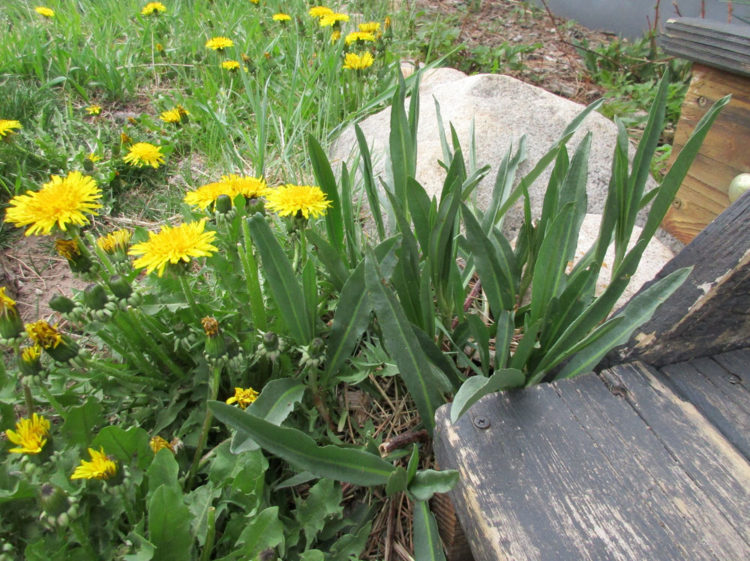
There are many species of edible dock (Rumex spp.), all of which are related to buckwheat and rhubarb. As a group they generally have dark green leaves that are somewhat thick, and papery sheaths wrapping the base of their leaves and flower stems. Docks produce clustered seed heads in a panicle of 3-sided seeds that in some species tower tall above their sizeable leaves, similar to the seed stalks of rhubarb. When the seed heads dry out they are rust-red in color.
One of the most widely known edible docks is curly dock (Rumex crispus), a non-native species considered by many to be an agricultural pest, which has leaf margins that are wavy or “curly.” The newly unfurling or recently unfurled, somewhat stretchy, lemony leaves and petioles (leaf stalks) are gathered and eaten raw or cooked. I like to chop them up and sauté them as a side dish with onions, in eggs, or in spinach-like preparations.
About Narrow Dock
A dock that abounds within walking distance from my house at 10,000 feet on the urban edge of South Park, Colorado is narrow dock, also called willow dock (Rumex triangulivalvis, Rumex salicifolius) because the leaves are reminiscent of willow leaves. The narrow docks are some of the group’s more diminutive members and are often overlooked as a food source.
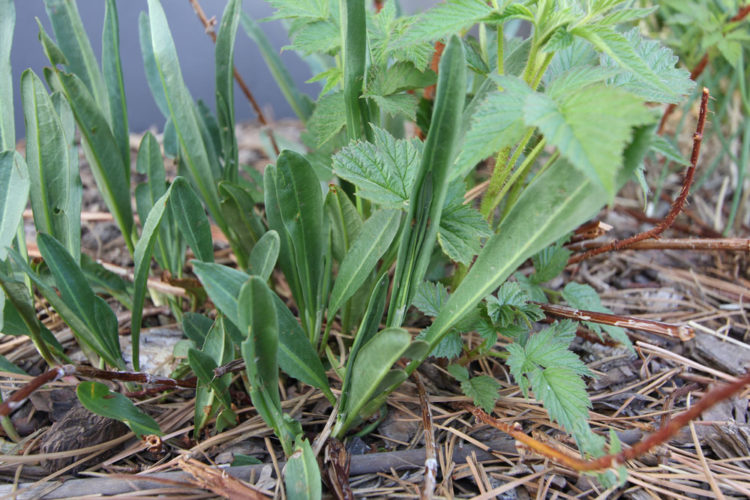
Narrow dock starts in a sprawling clump of narrow, basal leaves which range in shape from linear to lanceolate, narrowing to a point at the far end and narrowing to their thinner leaf stalks on the other. They are somewhat thick or rubbery to the touch, and dark green with a distinctively lighter midvein that sticks out on the underside (as in, not flush with the leaf).
From the clump emerge multiple thick-ish stems upon which more leaves are borne alternately. At this point the papery sheaths at the leaf bases become quite visible, with leaves opening up from inside them. The papery sheaths also wrap the stems, which often curve out and up. The flowers that come later don’t look like “flowers” at all but tight clusters of light green bits tended by upright, super-skinny new leaves. Eventually these flower stems turn rust-red as they dry out, so on older plants you will often them still standing with young new leaves emerging from the base.
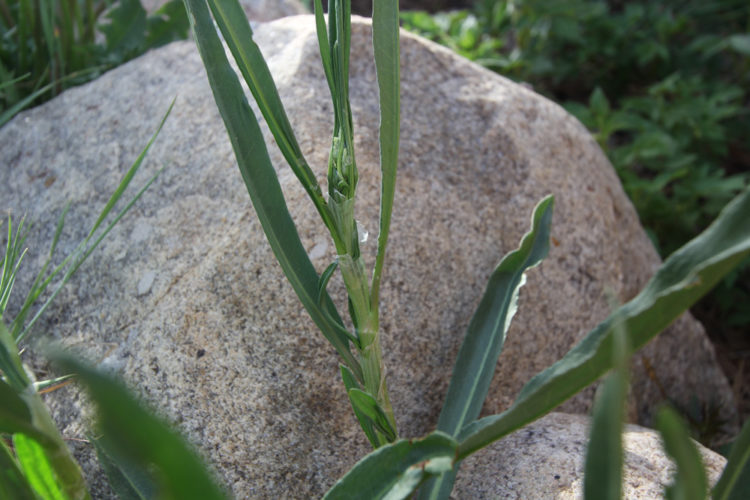
Although our local narrow dock looks and acts like a weed, it is a native species. The USDA range maps lump it in Rumex salicifolius, and show it occurring throughout Canada and most of the US, with the exception of the Southeast. Colorado taxonomists Weber & Wittmann (2012) describe another species of narrow dock (R. utahensis), distinguished by a total lack of tubercles on the three valves of the fruit, that occurs with more frequency westward. All are similarly edible.
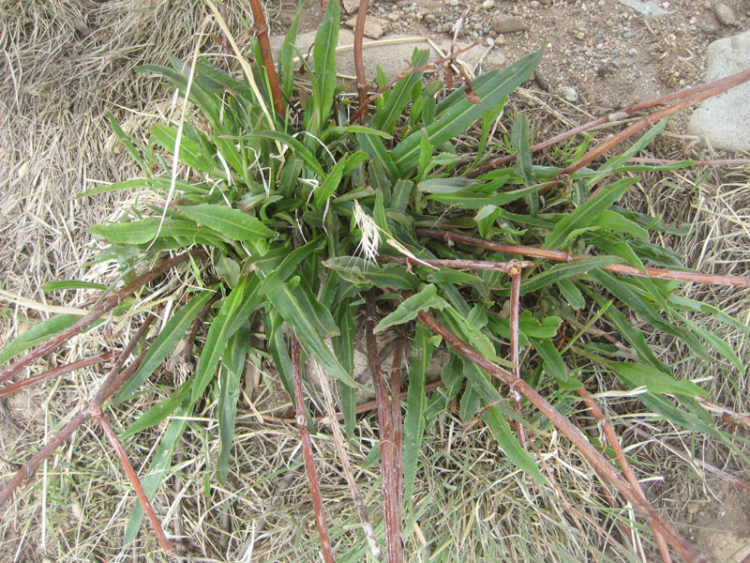
What & When to Gather
Compared to curly dock, and the other big native docks in my area (R. occidentalis, R. densiflorus), narrow dock might seem small and fiddly and difficult to forage. But like any other wild food plant, gathering narrow dock at the right stage, when it is young and fast-growing, is essential.
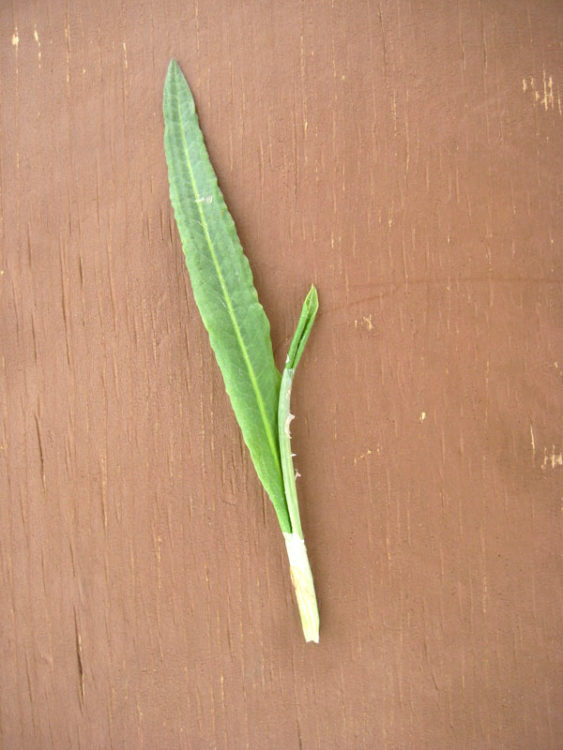
Clues are leaves that are still rolled up, just recently unrolled, slimy when you take the paper sheaths off, and not turning red-brown at the edges. I find that narrow dock offers the best food just before it sends up its stems. At this point the basal leaves are big enough to make for fairly easy foraging. You can aim for the newest leaves or just clip a whole bunch, which is what I did the other day in a Fairplay alley.
The new stem leaves that follow are definitely still edible, they’re just smaller and more of a pain to forage. That’s not to say I haven’t eaten my share of them, especially in the early years when the branching, flowering plants were easier for me to identify. Keep in mind if you see a recently bolted narrow dock plant, you can often find unbolted specimens nearby. Or, the entire new flowering heads and attached young leaves and soft portions of stem can also be used.
Penstemon Lookalike
I can think of one narrow dock lookalike in my area that might fool you at first glance—a penstemon (Penstemon spp.) whose leaves are similar in appearance before the plant produces its distinctive, two-lipped, tubular flowers. Penstemons have opposite leaves, however, meaning they appear in pairs across from each other along the flowering stalks, compared to the alternating leaves on narrow dock’s stalk. If the plants you’re observing have not yet produced flowering stalks, they are more difficult to distinguish.
To learn young narrow dock, I first studied it in a more mature growth stage, to see the clusters of inconspicuous flowers, followed by rust-brown seed heads. It’s a perennial so the plant comes up in the same place, making young-plant identification easy.
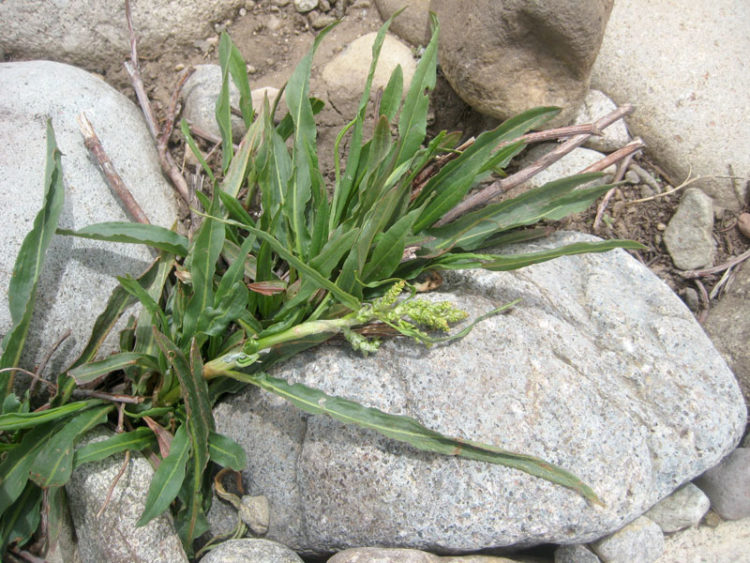
Narrow Dock as Food
As a food, dock is a fine staple, though I won’t say I go gaga for it. In fact, in recent years, my better half has admitted to less than a fondness for dock. But I like it for the nourishment—the fact that I have a practical, organic, abundant, growing-as-nature-intended wild food source at my doorstep. I figure that’s reason enough for me to keep seeking out new ways to serve dock.
So … the other day I was in the kitchen cooking up a pretty fantastic concoction of chopped onions in feral garlic greens-infused butter, fresh tomatoes, generous spoonfuls of wild porcini powder, and white wine. My better half was hovering about inhaling the fabulous aroma, when he spotted the chopped narrow dock on the cutting board. “Oh,” he said, his face falling. “We’re having dock.”
Honestly, I loved this preparation. I served it as a side dish one night, and the next night it was even better spread on good bread, topped with a finely grated hard Italian cheese and toasted in the oven. I will definitely make this again, especially considering how nice the narrow dock is in my town right now.
Even Mr. Whineypants said he liked it, appreciating how the strong flavors of the other ingredients balanced the dock. So this is a good preparation if you have a “whiney” better half who complains of too much dock.
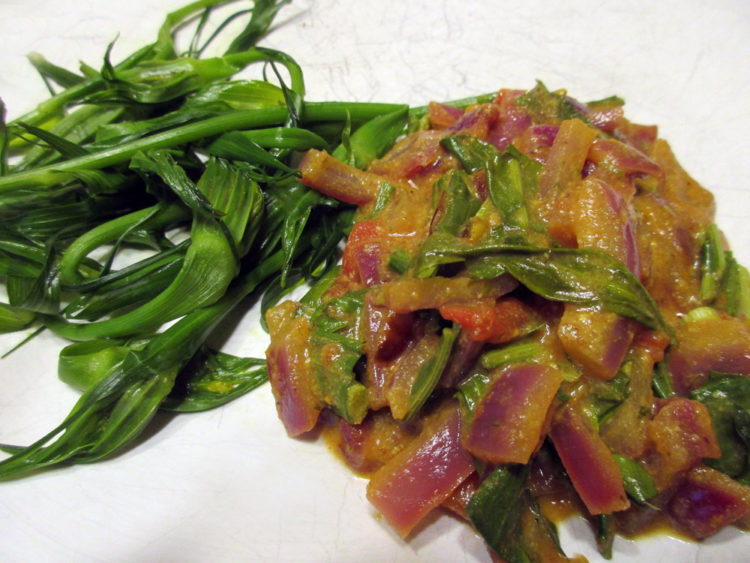
Dock in ‘Whiney’ Tomato Mushroom Sauce
Ingredients:
- Dock, chopped, any kind
- Tomato
- Porcini mushroom powder
- White wine
- Red onion
- Garlic-infused butter
- Garlic powder
- Salt
Instructions:
Saute 1 chopped onion in garlicky butter. Add chunks of tomato (I used 1), salt, and more garlic (fresh, powdered, etc.) to taste. Add porcini powder teaspoon by teaspoon to thicken the liquid, cooking and thinning with white wine as needed to keep it moist. Add chopped dock at the end until wilted. (I turn off the flame right when the color of the dock changes to gray-green.) Good served as a side dish or on top of good, toasted bread with sprinkles of hard cheese.
Updated 2.22.21
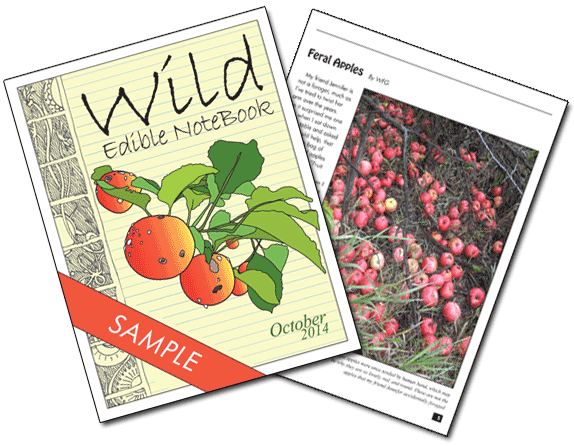
Leave a Reply